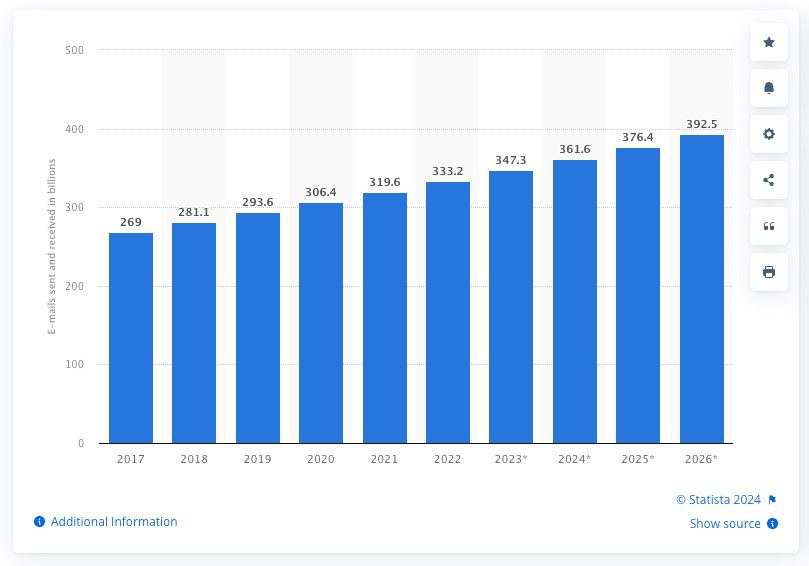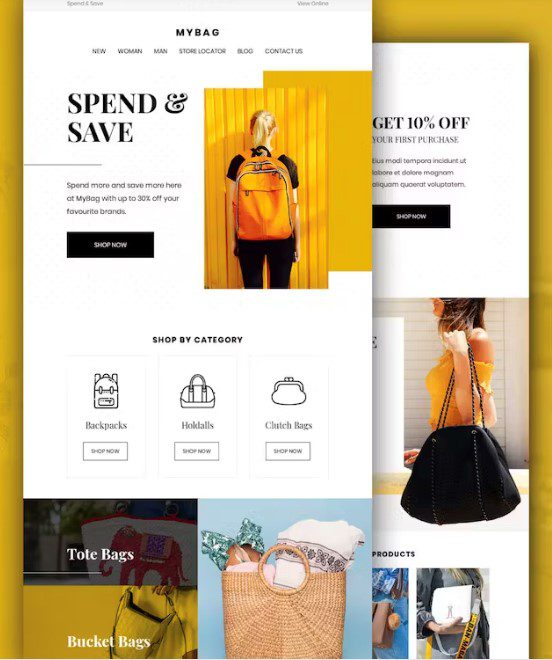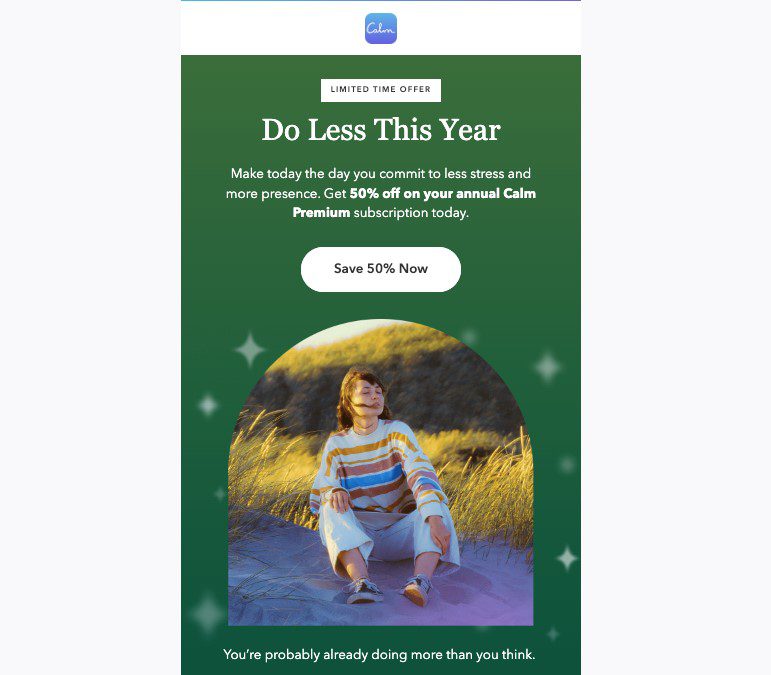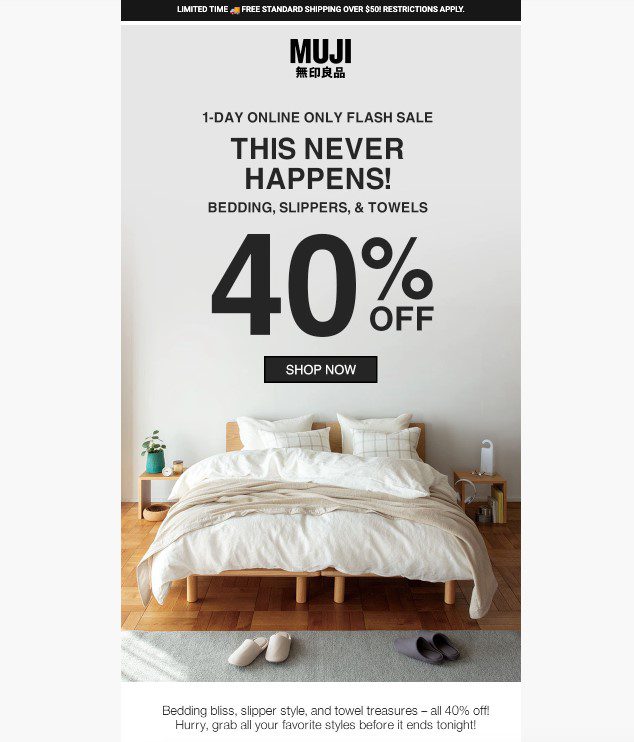
Make Your Emails Your Own: The Pros of Email Branding and How to Nail It
Establishing a strong identity is vital for brands. Email branding can make a difference for your business and build trust with current and potential customers.
In this article, we’ll delve into how email branding can enhance customer engagement, increase brand recognition, and ultimately drive conversions. Discover how leveraging the power of email branding can elevate your marketing efforts.
What is email branding?
Email branding refers to the process of creating a consistent identity for your brand in email communication with its audience. It involves incorporating recognizable elements such as logos, colors, fonts, and messaging that reflect and promote the brand both visually and tonally.
Why is email branding important for your marketing strategy?
The goal of email branding is to foster recognition and trust in the brand, engage subscribers with relevant content, and ultimately drive conversions.
Branding is relevant if you want your brand to stand out, especially because inboxes are pretty crowded with all kinds of information. According to Statista, in 2024, we will send and receive 361.6 billion emails per day worldwide.

Effective email branding encompasses various elements such as design, copy, personalization, and segmentation, all of which work together to convey a cohesive brand identity that resonates with the recipient.
Related: 3 Strategies to Grow Your Brand with Email Marketing (With Tips from Sally Hogshead)
Benefits of effective email branding
The benefits of email branding include enhancing brand recognition and credibility to fostering customer engagement and trust. With your engagement metrics influencing your sender reputation, a strong email brand also improves your email deliverability. Having a cohesive and well-executed strategy can significantly impact marketing success.
Let’s explore the advantages that come with implementing effective email branding practices.
Tips for effective email branding
First, let’s discuss valuable tips to enhance and strengthen your strategy.
Consistent and cohesive design
A cohesive design ensures that recipients instantly recognize your brand. Also, it can help in building trust and credibility, as a well-designed email reflects attention to detail and a commitment to quality.
Moreover, consistent design elements such as colors, fonts, imagery, and logos create a unified brand experience across different marketing channels, strengthening brand recognition and leaving a lasting impression on your audience. If you are working with a large team, have a marketing approval process in place to ensure that you have consistency across your channels.
Overall, investing in a consistent and cohesive design for your emails is an investment in establishing a strong brand presence and enhancing marketing effectiveness.
Creating email templates that reflect the brand identity

To create email templates that reflect your brand identity, start by incorporating your brand colors, fonts, and logos into the design. Use consistent imagery and visual elements that align with your brand aesthetic.
Ensure that the layout and structure of the template are user-friendly and consistent across different devices and email clients.
Clear and compelling subject lines
Craft compelling subject lines that grab attention by using concise language, posing intriguing questions, or instilling a sense of urgency. It is essential to align the tone of the subject line with your brand identity to maintain consistency.
Also, A/B testing subject lines can help optimize performance. Test different variations to determine which ones generate higher open rates and engagement. Experiment with different lengths, personalization, and wording to find the most effective approach. If you test continuously, you can improve email open rates and boost the impact of your email marketing campaigns.
Personalization and segmentation
To engage subscribers effectively, personalized content is key.
Tailored emails cater to individual preferences, interests, or previous interactions, and you can create a more engaging experience. This could include recommending products based on purchase history or offering exclusive discounts based on previous actions.
Related: How to Create Captivating Content for Every Stage of the Buyer’s Journey
Creating segmented email lists will help you personalize your email content. Segment your subscribers based on demographics, behavior, or preferences, such as age, location, purchase history, or engagement with specific content.
Targeted emails that resonate with each segment can drive higher open rates, click-through rates, and, eventually, conversions.
Emphasizing brand voice and tone
To emphasize brand voice and tone in your email communication, align your messaging with your brand’s values, personality, and audience.
- Use consistent language, tone, and style throughout your emails.
- Incorporate brand-specific vocabulary, taglines, and phrases.
- Infuse your emails with the unique personality that represents your brand, creating an authentic experience for your subscribers.
Incorporating brand elements
Incorporating brand elements into your emails is crucial for maintaining consistency and establishing a strong brand identity. Incorporate your logo, brand colors, and fonts to make a visually cohesive experience.
Adding recognizable brand elements reinforces brand recognition and trust among your audience, enhancing the effectiveness of your email marketing efforts.
Best practices for email branding
To maximize the impact of your efforts, it’s essential to follow best practices. Let’s dive into some key recommendations.
Optimizing for mobile
To optimize your emails for mobile, ensure they are responsive, meaning they adapt seamlessly to different screen sizes and devices.
- Start by using a mobile-friendly email template that adjusts automatically.
- Keep your email design clean and simple, using legible fonts and concise copy.
- Optimize your images for quick loading and make your call-to-action buttons large and easy to tap.
- Ensure your emails display correctly by testing them across different devices,
Providing valuable content
Offer relevant and useful content to subscribers, but keep it concise. A recent ZeroBounce report shows that 66% of people prefer short emails. Users get tired of reading long emails, so keep yours between 60 to 200 words.
Also, ensure you’re balancing promotional and educational content. Of course, the goal is to convert, but you want to keep your subscribers’ attention.
Engaging call-to-action (CTA)
When placing call-to-action in your emails, ensure these are persuasive CTAs that align with your brand’s goals. Here are some tips to write engaging CTAs:
- Use clear and action-oriented language that prompts immediate response.
- Incorporate strong verbs and encourage a sense of urgency or exclusivity. For example, phrases like “Buy now,” “Limited time offer,” or “Join today” can attract attention and prompt users to take desired actions.
- Keep CTAs concise, visually appealing, and strategically placed within your content to maximize their impact and drive higher engagement.
- You can also make them interactive; adding a fun QR Code using a secure and trackable QR Code maker will help you bring in an interactive element and a chance to get more creative with your CTAs.
Monitoring and analyzing email metrics
Monitoring email metrics is essential for effective email marketing. When you keep track of open rates, click-through rates, and conversions, you gain valuable insights of your campaigns’ performance.
- Open rates indicate the success of subject lines and audience engagement.
- Click-through rates provide information about the effectiveness of call-to-action buttons and the overall appeal of the email content.
- Conversions help measure the success of email campaigns. Analyzing how users convert will give you insights about purchases or sign-ups.
Analyzing these metrics can help you make data-driven decisions, optimize your strategies, and continually improve the performance and ROI of your email marketing efforts.
How renowned brands send their emails
Now that we’ve learned how to incorporate branding into your emails, let’s explore examples of captivating and effective email branding by renowned companies.
Aerie’s visually appealing emails

With tailored recommendations based on purchase history, and dynamic content, Aerie creates a sense of attention. The use of colors, eye-catching and wholesome visuals, and playful designs enhances the overall appeal, resulting in engaging and memorable email experiences for their customers.
Calm’s emotionally compelling email storytelling

Calm, a meditation and relaxation app, uses emotionally compelling email storytelling that resonates with its audience. They incorporate their signature color palette to create a sense of calmness and serenity within their communications.
By aligning their email design with their app and brand, the brand strengthens its connection with subscribers and promotes core values of mindfulness and relaxation.
Muji’s consistent branding across email and website

Muji’s email and website branding is consistent with its minimalist aesthetic, using neutral colors, clear typography, and straightforward copy.
Emails feature clean layouts and images to showcase products, and their branding extends seamlessly to their website. Being consistent promotes a strong brand identity and reinforces their commitment to simplicity and quality in all aspects of their business.
Time to send those branded emails
As you can see, email branding plays a fundamental role in achieving long-term business success. Pay special attention to consistent design elements, incorporating brand identity, and crafting compelling subject lines. That way, you can create a powerful brand presence that goes beyond your customers’ inbox.
Related: How to reach your customers’ inboxes
The impact of effective branding expands beyond the immediate interaction, as it helps build trust, credibility, and customer loyalty over time – you’ll see! Leveraging essential branding tools, such as cohesive design templates and brand-specific messaging, can further enhance your email marketing strategy.
Once you deliver a cohesive brand experience through emails, you can elevate your marketing efforts, stand out from competitors, and cultivate lasting relationships with your audience.
Author: Alina Midori Hernández is a journalist-turned-content writer at Envato. She’s passionate about design and the creative industry. She’s a metalhead, jazz enthusiast, and hardcore Tori Amos fan. Read the Envato Elements blog.
Table of Contents
- What is email branding?
- Why is email branding important for your marketing strategy?
- Benefits of effective email branding
- Tips for effective email branding
- Consistent and cohesive design
- Creating email templates that reflect the brand identity
- Clear and compelling subject lines
- Personalization and segmentation
- Emphasizing brand voice and tone
- Incorporating brand elements
- Best practices for email branding
- Optimizing for mobile
- Providing valuable content
- Engaging call-to-action (CTA)
- Monitoring and analyzing email metrics
- How renowned brands send their emails
- Aerie's visually appealing emails
- Calm's emotionally compelling email storytelling
- Muji's consistent branding across email and website
- Time to send those branded emails






